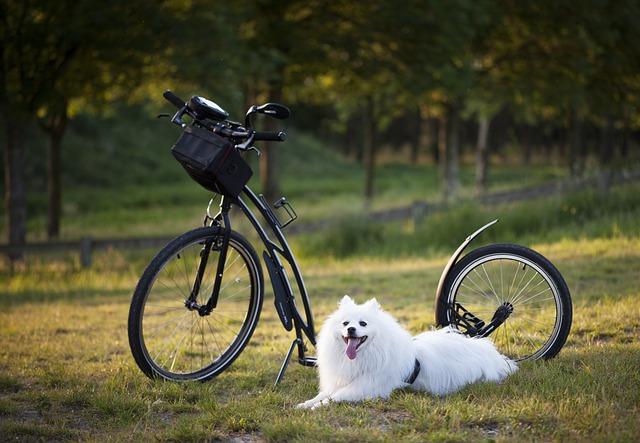Welcoming a dog into your home means embracing the joy and responsibility that comes with caring for your furry friend. As conscientious pet parents, we often find ourselves wondering what foods are safe to share with our canine companions. While dogs have different dietary needs than humans, many fruits and vegetables can offer health benefits and delightful treats for them. In this guide, we’ll explore a variety of safe, nutritious options that can be included in your dog’s diet, ensuring both their happiness and well-being. Join us as we delve into the world of canine-friendly produce, where we uncover the do’s and don’ts of sharing your favorite fruits and veggies with your four-legged family member.
Safe and Nutritious Fruits Your Dog Will Love
Introducing a variety of fruits into your dog’s diet can be a delightful way to add some extra nutrients and flavors to their meals. Not only do these treats offer a burst of vitamins and minerals, but they also provide a fun way to keep your furry friend happy and healthy. Here are some fruits that are both safe and delicious for dogs:
- Apples: Packed with vitamins A and C, apples are a great source of fiber. Remember to remove the seeds and core before serving.
- Blueberries: These little berries are antioxidant-rich, promoting a strong immune system and overall health.
- Watermelon: Low in calories and high in hydration, just ensure you remove the seeds and rind to avoid any digestive issues.
- Bananas: A convenient snack that provides potassium and vitamin B6, bananas are easy to mash and mix into your dog’s regular food.
While incorporating these fruits, it’s crucial to serve them in moderation and observe any reactions your dog might have. Every dog is different, so always consult with your vet if you’re introducing something new to their diet. A balanced approach ensures your pet gets the best of both taste and nutrition!

Vegetables That Keep Your Pup Healthy and Happy
Incorporating vegetables into your dog’s diet can be a wonderful way to boost their overall health. Carrots are an excellent choice; they’re crunchy, full of vitamins, and help maintain dental health by reducing plaque buildup. Green beans are another favorite, low in calories yet rich in vitamins C and K, as well as manganese. They make a perfect snack for pups who need to watch their weight.
- Sweet Potatoes: A great source of dietary fiber, vitamins B6, C, and beta-carotene, these root veggies are beneficial for digestive health.
- Spinach: Packed with iron and antioxidants, spinach supports a healthy immune system and helps prevent inflammation.
- Pumpkin: Known for its high fiber content, pumpkin is excellent for regulating a dog’s digestive system, especially in cases of diarrhea or constipation.
Adding these vegetables to your dog’s meals not only diversifies their diet but also ensures they receive essential nutrients for a vibrant life. Always remember to introduce any new food gradually and consult with your vet to tailor the best dietary plan for your furry friend.

Fruits and Veggies to Avoid for Your Canine Companion
While many fruits and vegetables are a delightful and healthy treat for your furry friend, some can pose significant health risks. It’s crucial to be aware of these potential dangers to keep your canine companion safe and healthy. Here are some items to steer clear of:
- Grapes and Raisins: These can cause kidney failure in dogs, even in small quantities.
- Onions and Garlic: Both contain compounds that can damage red blood cells, leading to anemia.
- Avocados: The persin in avocados can be toxic, leading to vomiting and diarrhea.
- Cherries: While the flesh is safe, the pits contain cyanide, which is poisonous to dogs.
- Mushrooms: Wild mushrooms, in particular, can be toxic and lead to severe health issues.
Ensuring these items stay out of your dog’s diet is essential for their well-being. Always consult with your vet if you’re unsure about a specific fruit or vegetable’s safety.

Tips for Introducing New Produce to Your Dogs Diet
Introducing new fruits and vegetables to your dog’s diet can be a delightful experience for both you and your furry friend. To ensure a smooth transition, start by offering small portions and observe how your dog reacts. Patience is key, as some dogs may take time to adjust to new flavors and textures. It’s also a good idea to introduce one new produce item at a time. This approach not only allows your dog to acclimate but also makes it easier to identify any potential allergies or digestive issues.
- Start with small pieces: Cut fruits and vegetables into bite-sized pieces to prevent choking hazards.
- Monitor your dog’s response: Look for signs of digestive upset, such as diarrhea or vomiting, and consult your vet if necessary.
- Mix with regular food: Gradually mix the new produce with your dog’s regular food to enhance acceptance.
- Choose the right time: Introduce new foods during a calm period, not immediately before or after exercise.
- Be consistent: Offer the new produce regularly to help your dog develop a taste for it.

